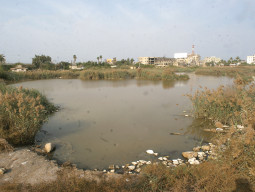
GILGIT:
An artificial lake formed accidentally in Shigar valley of Gilgit-Baltistan (G-B), this week, is draining gradually after officials and local volunteers dug a spillway through the debris on Saturday.
The lake came into existence on Wednesday near a village known as Hotoh in Shigar valley after boulders, rocks and mud fell in the river, blocking the flow of water.
The incident refreshed harsh memories of Attabad Lake that was formed in a similar fashion in Hunza valley three years back. Contrary to the 19 deaths at Attabad, the Shigar landslide didn’t claim any lives, though it still poses a threat to four downstream villages.
It’s good that water is now flowing out through the spillway dug out by the Public Works Department, said Imran Nadeem, a former tourism adviser and a resident of Shigar valley, about 300 kilometres (km) from Gilgit, the capital of G-B.
The situation could prove to be disastrous for people living downstream if preventive measures aren’t taken in time, he told The Express Tribune.

As the news of the river’s blockade spread, civilian and army authorities rushed to the valley to get first-hand information. We hope the situation will normalise soon, said Basharat Ali, a government official in Skardu.
By the time a spillway was carved out, the lake had expanded up to four km upstream and had gained 100 feet in height.
Nadeem said four villages downstream risk being swept away if the banks were to burst.
The debris blocking the river was reportedly about one cubic foot wide in volume and had turned concrete due to freezing temperatures that plunged to 20 degrees Celsius in the valley.
Climatic conditions are harsh in the valley given the freezing cold, said Muzaffar, a resident of Shigar. The access route linking the lake with Shigar became slippery due to the freezing temperature, making transportation of heavy machinery to the site nearly impossible.
The accumulation of water also damaged the route leading to K2, the world’s second highest peak situated in Baltistan.
Published in The Express Tribune, January 27th, 2013.




























































COMMENTS
Comments are moderated and generally will be posted if they are on-topic and not abusive.
For more information, please see our Comments FAQ